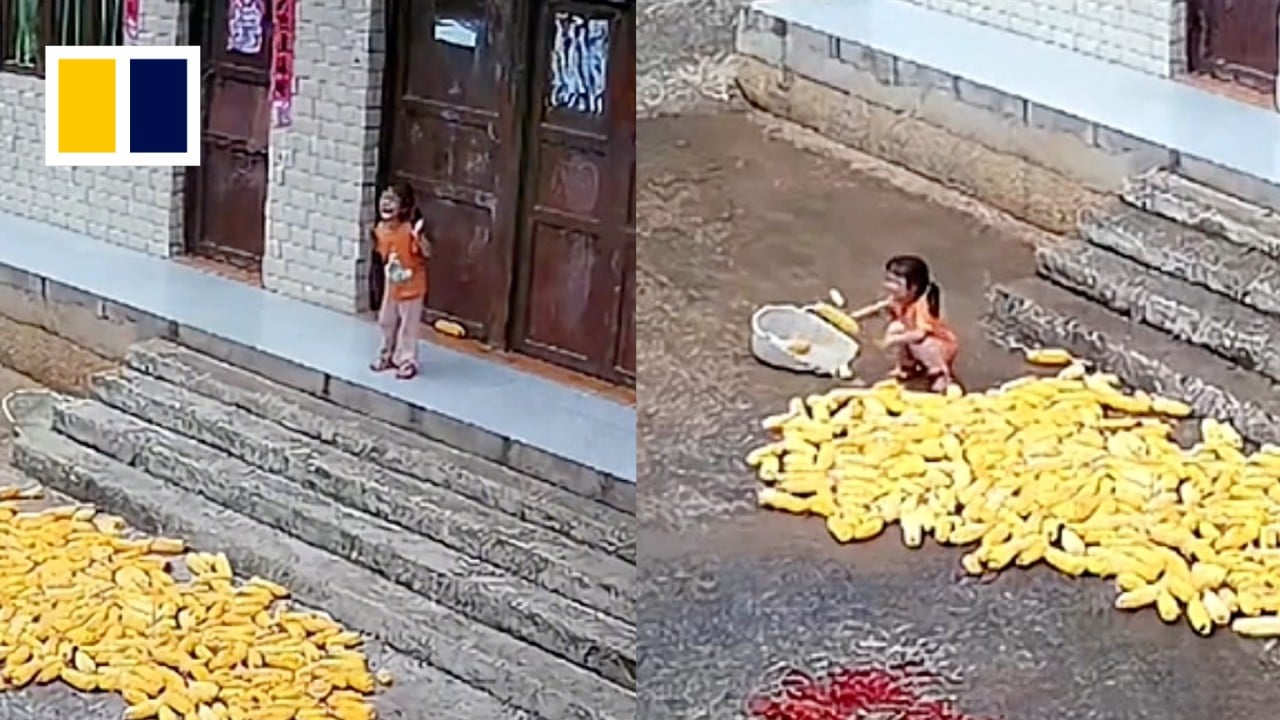Despite being one of the most important staple crops around the world, the exact origins of corn have been contested by scientists.
The origins of modern maize have led to “more than 100 years of debate between archaeologists, geneticists and botanists”, Jeffrey Ross-Ibarra, a professor of evolution and ecology at University of California, Davis, said.
The most commonly accepted model, based on genetic analysis done at the start of the century, is that corn was domesticated in a singular event in a specific part of Mexico, he said.
‘A new era’: China embraces GM corn, soybeans after years of heated debate
‘A new era’: China embraces GM corn, soybeans after years of heated debate
This theory says the crop was domesticated from a singular variety of teosinte – a type of wild grass – in particular one from the lowlands of southwest Mexico.
However, the researchers found some discrepancies in this model – namely that “maize varieties that looked most like the single lowland teosinte actually come from the highlands of Mexico”, Ross-Ibarra said.
This discrepancy caught the interest of his team, who began looking into why this may have occurred.
The team began to find evidence of a second teosinte variety, adapted to the central highlands of Mexico, in the genomes of modern corn. This variety had evolutionarily diverged from the lowland one up to 60,000 years ago, the paper said.
They initially found that this variety, Zea Mays subspecies Mexicana, was important for gene flow in the highland regions of Mexico, and hybridisation with maize allowed it to adapt to living in the area.
The researchers also began to find evidence of the highland variety elsewhere.
The Andes do not have teosinte, so it could not have contributed to local maize populations in the South American mountain range, but “we still found it there,” Ross-Ibarra said.
In fact, genetic evidence of Mexicana was found “absolutely everywhere,” he said.
To explain the findings, the team came up with a novel model for the origin of modern maize that explains why Mexicana genes are found in corn around the world.
The model suggests that 4,000 years after maize began to be domesticated, it hybridised with Mexicana. After this event, it spread across the Americas “either replacing or hybridising with pre-existing maize populations,” the paper said.
This model is consistent with both archaeological data and the team’s genetic analysis, which found that Mexicana genes were “ubiquitous” in the maize samples, according to the paper.
The team analysed over a thousand corn genomes from the Americas and China, including around 300 newly sequenced traditional varieties.
Across hundreds of genomes, they found that on average Mexicana contributed to 15 to 25 per cent of the samples’ ancestry.
Mexicana contributes to 25 per cent of genetic variation for kernels per row, 15 per cent for plant height, and 10 per cent for flowering time on average, according to the paper.
While the team was not able to pinpoint specific traits in modern corn that were directly a result of Mexicana genes, Ross-Ibarra said that the genes could have contributed to development of certain maize traits that made it more viable as a staple crop.
But this model also raises further questions, such as how it spread across the Americas.
It requires “either movement of people bringing their maize with them, or trade between groups,” Ross-Ibarra said.
‘Over-reliance’ on seed imports highlights China’s food security conundrum
‘Over-reliance’ on seed imports highlights China’s food security conundrum
The team cannot answer this question at present but will continue investigating this question along with human geneticists and archaeologists, with a goal of looking at “maize and humans as a combined system.”
Once we have domesticated a crop to fit our needs, “we don’t tend to think of wild relatives of crops as being particularly useful,” Ross-Ibarra said.
But these wild varieties provided genetic contributions that helped plants to adapt, so their wild genetic resources could be used to help breed crops for “changing climates and new environments”.
The wild relatives could have bad genetic variants that we do not need, and the process of breeding them could be difficult, but it is still important to safeguard this genetic diversity, Ross-Ibarra said.



